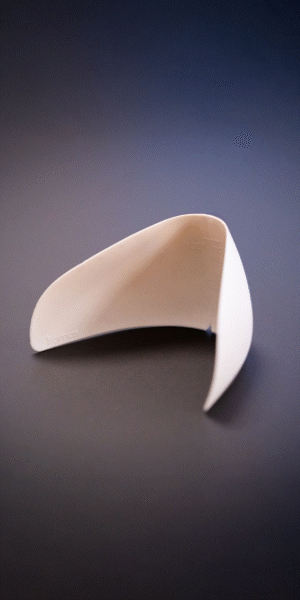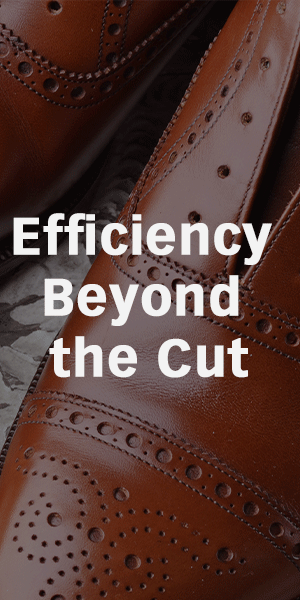A perception shift

The more consumers know about hemp as a fabric, the more they want products made from the sustainable, durable plant. That's why hemp footwear brands are building education into their business models.
Hemp has a bit of a perception problem. While hemp and marijuana are the same species of cannabis plant, science makes a vital distinction: Hemp contains less than .3% of tetrahydrocannabinol (THC), the chemical found in the cannabis plant that makes people “high”. Marijuana typically contains between 5% and 20%.
Marijuana, therefore, is a mind-altering drug that gets smoked or otherwise consumed, and hemp gets processed and made into products such as rope, textiles, shoes and many, many other things.
The multiple varieties of cannabis cause confusion around this plant that has far-reaching consequences and has in many cases inhibited hemp’s widespread adoption for industrial purposes. This confusion is why, last month, the US’s National Hemp Association (NHA), the European Industrial Hemp Association (EIHA) and a number of other hemp associations published a paper in anticipation of an upcoming World Health Organisation vote on the subject, outlining why industrial hemp is an agricultural product, not a drug. (It is also why parents of children with epilepsy still must fight for access to a treatment like Charlotte’s Web, even though it too contains less than .3% THC.)
As a result, hemp-focused footwear companies like Prague-based Bohempia must split their time between selling hemp-based shoes and highlighting information about the hemp from which the shoes are made. At a time when consumers are seeking more sustainable products that are long lasting and kind to the environment, hemp footwear retailers know that educating consumers is good for business.
The misunderstood superplant
Hemp is “the strongest organic fibre which is also ecological,” Tomas Rohal, founder, co-owner and CEO of Bohempia tells World Footwear. He likes to describe hemp as “functional fabric which grows on the field”.“If you compare hemp to cotton, you need two times less water, four times less growing land and almost no agrochemistry to grow it. That speaks for itself,” he says. In addition to these environmental credentials, hemp is naturally antimicrobial, moisture-wicking, thermo-regulating and strong. These, he adds, are “great properties for shoes.”
Currently Bohempia carries shoes made of hemp in an extensive range of styles — high tops, low court shoes, espadrilles, Chelsea boots, plimsolls, slip-ons and more — in colours ranging from earthy browns to bright blue and pink. The only limitations Mr Rohal sees is in fibre thickness. “You can't produce a fibre as thin as the one made from cotton, but that isn't a problem for most shoe designs,” he says. But, “when you want to make elegant womans pumps, functional outdoor shoes or alternatives to leather shoes, hemp could be a limitation.”
Hemp barefoot-style shoes, which have a thinner sole, make up more than 50% of Bohempia’s sales, and the company’s autumn/winter collection is packed with them. (Mr Rohal also says that the Czech Republic and Slovakia have more barefoot users per capita than anywhere else in the world.)
Nevertheless, his company contends with misunderstanding surrounding cannabis that becomes marijuana versus cannabis that gets turned into fibre and fabric. He is working “to break the stereotypes of cannabis which are still in many people's minds”.
Doing so is key to his company’s stated mission to ‘bring hemp back to mainstream use’. “There's still a big problem with legislation in some countries because of confusion with cannabis; not so many people know that those are two different plants,” he says. “When we present our shoes as sustainable and ecological — both qualities of the hemp material — we get better responses. We're working on getting out of the stoner/hippie style of clothing and get to be seen more in a broader public.”
The home page of the company’s website features not only shoes but big-font stats on hemp. By the time a potential customer scrolls to the bottom of that first page, they have seen the plant needs 50% less water to grow than cotton, is less damaging to soil and needs less land to grow, has four times the yield of cotton, is a good tool for carbon capture (one tonne of harvested hemp, according to Bohempia, removes 1.62 tonnes of carbon dioxide from the atmosphere), and requires 95% less agrochemicals than cotton.
A similar strategy can be seen by US-based 8000 Kicks, a startup that launched a waterproof hemp shoe in 2019 and released a second batch in September last year. For waterproofing, the 8000 Kicks hemp has a coating added during manufacturing, and then a waterproof membrane added to the finished shoe. Again, the company’s website emphasises the ecological benefits of hemp; the home pages’s first words include “72% less CO2 used” and “70% less water used”.
Interestingly, the startup’s name was originally DopeKicks but the company recently changed it — possibly an effort to further distinguish hemp’s purpose. (The number 8000 refers to the number of years hemp has been around, whereas ‘dope’ is another synonym for marijuana. )
The fruits of targeted consumer education, which stands on the shoulders of broader, systematic work by organisations such as NHA and EIHA, are reflected in a growing mainstream consumer base.
When Mr Rohal launched Bohempia in 2015, it was through a crowdfunding campaign on Hithit — a Czech equivalent to Kickstarter. “Even though it was more a combination of money raising and market research, it was a success – we raised about CZK 300,000 (around €11,000) and found out there is a demand for hemp sneakers in Czech Republic,” he says.
The brand’s popularity began to grow and when Bohempia launched a second campaign on the same platform, it raised a record-breaking CZK 4,000,000 (nearly €150,000) in the first four hours.
A 2018 Kickstarter campaign has also been successful, helping to spread the brand’s name worldwide. This year Bohempia opened a branch in the US and has signed with a distributor in Japan and Australia.
It is not only niche brands bringing hemp to the footwear world. This year alone, Nike has collaborated with at least two other labels to produce shoes made with the plant, including one with Size?, a footwear and apparel brand that is part of the JD Sports family.
The Size? x Nike collaboration is built around the silhouette of Nike’s Air Zoom Alphafly Next% running shoe. “We’ve drawn influence from minimalist Japanese design,” the brand states, “and built the pair with hemp across its uppers for a raw, natural aesthetic.”
Nike is also said to have collaborated with Stussy on a hemp version of the Air Force 1 Low, available in black and natural “fossil stone” colour. Several reliable sneaker-preview websites have published images of the shoes which were to be available in late December.
Adidas’ history with hemp is a long one and includes the controversial launch of “The Hemp” sneaker in December 1995. As the Los Angeles Times reported at the time, adidas described the shoe as a response to growing demand for products made of natural and recyclable materials, but Lee Brown, the then-director of the White House’s National Drug Control Policy Office, wanted adidas to change the shoe’s name because of its association with marijuana. The shoe was eventually renamed the “Gazelle Natural”.
Since then, adidas has continued to use hemp fabric in select shoes, including limited-edition collaborations with other brands. A fruitless search of the word ‘hemp’ on the sportswear giant’s website, though, suggests the company may still be uneasy with the connotations of the word.
Room to grow
An eventual global embrace and utilisation of industrial hemp feels inevitable, though challenges in both attitudes and logistics remain. The US 2018 Farm Bill has been praised by American pro-hemp associations; the bill made hemp production and distribution legal under federal law and permitted the interstate transfer of hemp products for commercial or other purposes in the US.
As mentioned, the UN Single Treaty on Drugs is up for discussion and review. Geoffrey Whaling, chairman of the board of directors for NHA, is currently working with the US State Department to insert modifying language to update the definition of hemp — with the goal, he says, of creating a level playing field for the world.
NHA, EIHA and other advocacy groups have published a paper called “Common Position of the Industrial Hemp Sector on the Single Convention and the International Drug Control System”. Prior to the UN vote in December and in the midst of a puzzling and unfair situation concerning the legal status of Cannabis sativa L. around the globe, a press release about the paper reads, this consortium wants to make clear: industrial hemp is an agricultural product, not a drug.
Mr Whaling notes there has been significant progress in this realm and is seeing real innovation happening — such as a major global brand (he does not say which one) that is developing an app with which users can take images of their feet and 3D-print a pair of shoes at home using a hemp-based filament.
“There is a huge and growing acceptance of hemp-based products — by consumers, industry and governments,” Mr Whaling tells World Footwear. “We receive calls every day from manufacturers who are looking for commercial levels of hemp fibre, seed, hurd/shives and cold press seed oil. We believe that this is a direct result of legalising hemp as a commodity crop in the United States.”
However, as education and law begin to work in hemp’s favour, Mr Whaling says there is also much work to do in establishing a viable supply chain.
“Farmers will not grow hemp unless we can answer two fundamental questions: ‘How do we plant and harvest a crop that can grow 20 feet tall?’ and ‘Where do we sell it? Where’s the market?’”, he says.
Supply chain also inhibits large-scale users of hemp raw materials who need a supply chain through which “tonnes of processed hemp” can be supplied. “Without the answers to these questions in place,” he says, “this will remain a regionalised or cottage industry."
Last September, Panda Biotech announced plans to open a 500,000 square foot hemp fibre processing centre in Wichita Falls, Texas. The company said the Panda Texas Plains Hemp Gin will have two 10-tonne-per-hour decorticators, which separate the outer bast fibre from the inner woody core (the ‘hurd’). When running at full production, the machines are said to be capable of processing around 300 million pounds of industrial hemp per year and, Panda estimates, could generate around $30,000,000 per year for farmers in Texas.
It is worth noting that, in December 2019, the company announced that they would be opening a different facility elsewhere in Texas, but cancelled their plans earlier this year after it said the location failed to pass inspection.
However, should the promised Wichita Falls location open as planned, it will be a significant contributor to establishing the supply chain. The company says operations are expected to commence in the first quarter of this year with full production anticipated by first quarter 2022.
In the meantime, groups such as the NHA and companies like Bohempia will continue their efforts to help lawmakers and consumers understand the distinctions and benefits of industrial hemp.
“Hemp has so many potential benefits — it can heal the planet by reducing CO2 and all parts of the plant can be used to feed, house, fuel and clothe the planet,” says Mr Whaling. “We are looking to the investment industry to respond and we continue our work to educate all sectors.”
Hemp uppers in a Size? x Nike collaboration.
Credit: Size?












